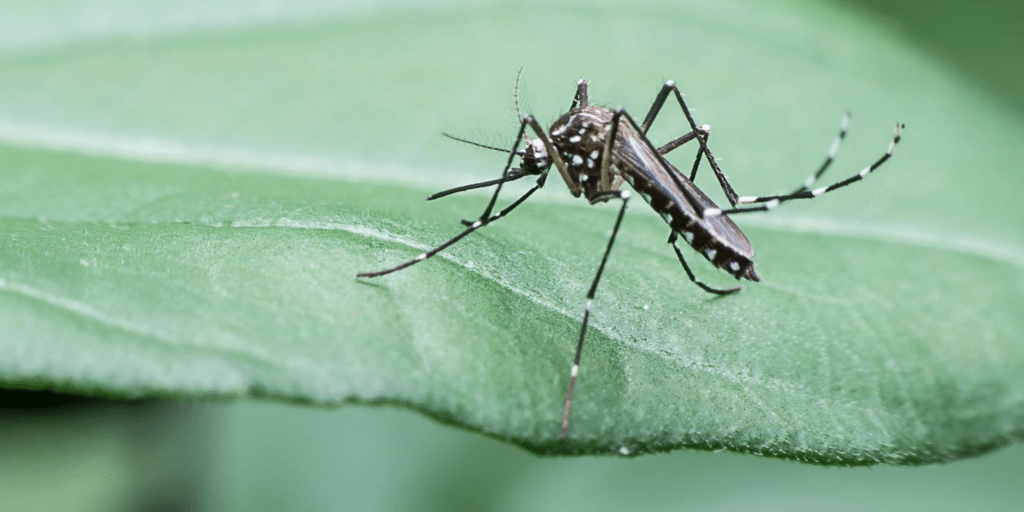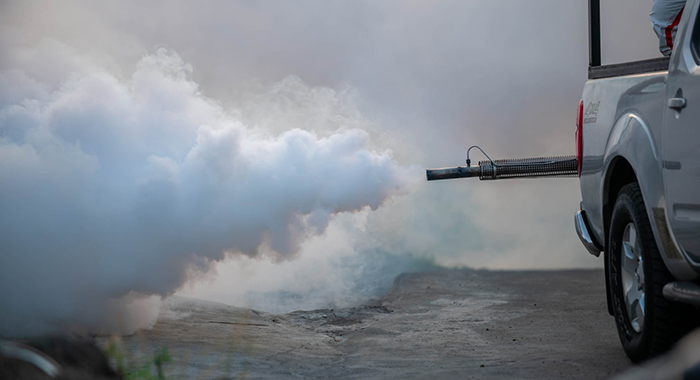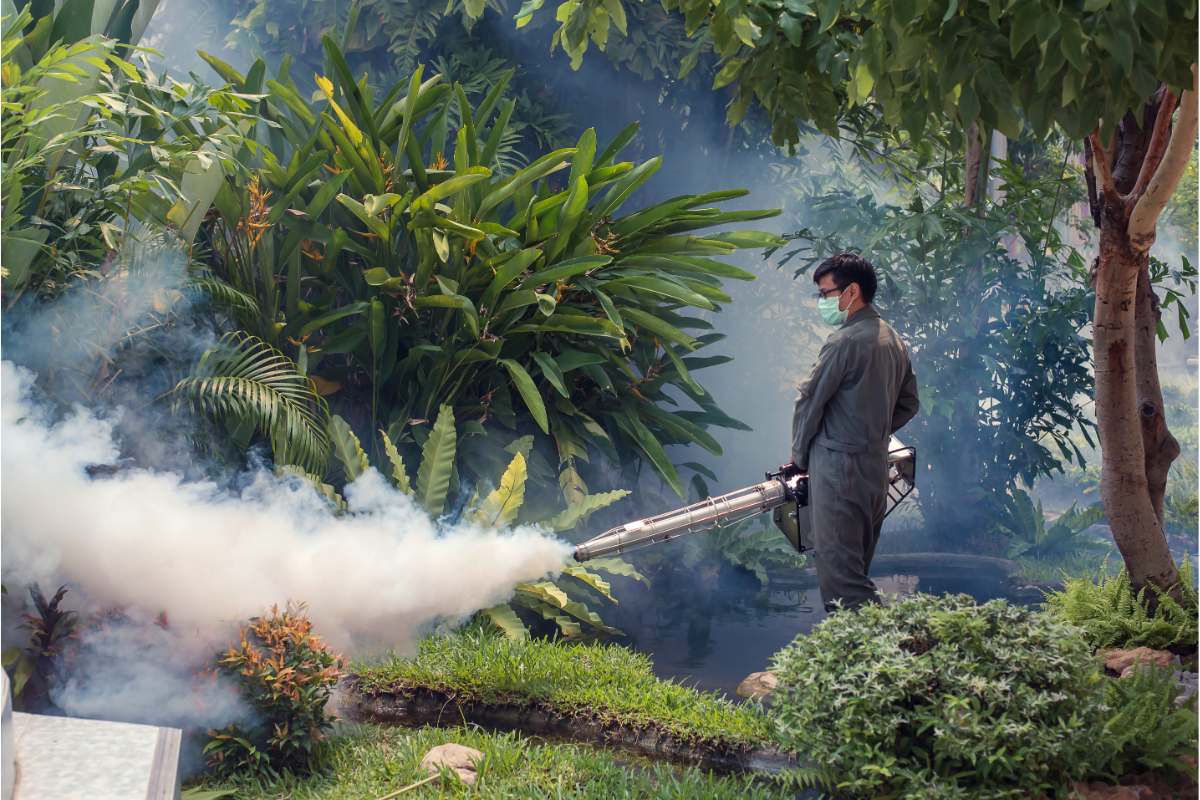The disadvantages of mosquito fogging include harming beneficial insects, disrupting ecosystems, and potential health risks. Mosquito fogging is indiscriminately harmful to insects and pollinators, not just mosquitoes.
The chemicals used can kill beneficial insects like butterflies, bees, and earthworms. Additionally, fogging has no effect on mosquito eggs or larvae, which can lead to a continuous cycle of infestation. Furthermore, exposure to large amounts of fogging chemicals can cause skin irritation, dizziness, headaches, and nausea in humans.
It’s important to weigh the effectiveness of fogging against its potential negative impact on the environment and health.

Credit: blog.nwf.org
Introduction To Mosquito Fogging
Mosquito fogging can have several disadvantages, including harming beneficial insects like butterflies, bees, and earthworms, disrupting the predator/prey relationship, and potentially causing short-term effects like eye, skin, or breathing problems for sensitive individuals. Fogging also only kills adult mosquitoes, leaving eggs and larvae unaffected.
Consider alternative mosquito control methods to avoid these drawbacks.
Mosquitoes are not only annoying pests but can also transmit dangerous diseases such as malaria, dengue fever, and Zika virus. To combat the mosquito population and minimize the risk of disease transmission, various mosquito control methods are employed. One popular technique is mosquito fogging, also known as space spraying or adulticiding. This method involves the use of fogging machines to disperse insecticides in the form of fine mist or fog, targeting adult mosquitoes in outdoor areas.
Brief On Mosquito Control Methods
Before delving into the specifics of mosquito fogging, it’s important to have a brief understanding of other mosquito control methods. These methods include:
- Source reduction: This involves eliminating or managing mosquito breeding sites, such as stagnant water sources.
- Larviciding: Larvicides are used to kill mosquito larvae before they mature into adults.
- Insecticide-treated bed nets: These nets provide physical barriers to protect individuals from mosquito bites while they sleep.
- Indoor residual spraying: Insecticides are applied to the interior surfaces of homes to kill mosquitoes that come into contact with the treated surfaces.
Focus On Fogging Technique
Mosquito fogging, as mentioned earlier, is a method that specifically targets adult mosquitoes. It involves the use of specialized fogging machines that disperse insecticides in outdoor areas where mosquitoes are known to be active. The fog created by these machines reaches the areas where mosquitoes rest, such as shrubs, trees, and other vegetation.
While mosquito fogging can be effective in reducing the adult mosquito population, it is not without its disadvantages. It’s important to be aware of these drawbacks before considering fogging as a mosquito control method.
Disadvantages Of Mosquito Fogging
1. Environmental impact: The insecticides used in fogging can have negative effects on non-target organisms, such as beneficial insects like bees, butterflies, and earthworms. These insecticides can disrupt the predator-prey relationship and harm pollinators, which are essential for maintaining a healthy ecosystem.
2. Health risks: Although mosquito fogging is generally considered safe for humans and pets when conducted according to recommended guidelines, there can be potential health risks associated with exposure to the insecticides. People with respiratory conditions or sensitivities may experience irritation or breathing problems. Additionally, pesticide residues may remain on outdoor surfaces after fogging, posing a risk if they come into contact with skin or are ingested.
3. Resistance development: Over time, mosquitoes can develop resistance to the insecticides used in fogging. Continuous and excessive use of these insecticides may contribute to the development of resistant mosquito populations, making fogging less effective in the long run.
4. Limited effectiveness: Mosquito fogging primarily targets adult mosquitoes, but it may have limited impact on reducing the overall mosquito population. It does not address mosquito breeding sites or larvae, which can quickly repopulate the area after fogging. Therefore, fogging should be combined with other control methods for comprehensive mosquito management.
5. Cost and logistics: Mosquito fogging can be expensive, especially for larger areas. It requires specialized equipment, trained personnel, and regular applications to maintain effectiveness. Coordinating fogging operations, ensuring proper timing, and considering weather conditions can also present logistical challenges.
Despite these disadvantages, mosquito fogging can still be a valuable tool in controlling adult mosquito populations in certain situations. However, it should be used judiciously, considering the potential environmental and health impacts, and in conjunction with other integrated mosquito management strategies.
Chemical Concerns
Mosquito fogging may not be the best solution for controlling the mosquito population due to its potential negative effects on the environment and non-targeted species. The use of chemicals in mosquito fogging can harm beneficial insects, such as pollinators and predators, and may cause health issues for individuals exposed to high levels of pyrethroids.
Mosquito fogging, while effective in controlling mosquito populations, comes with certain disadvantages, particularly in terms of chemical concerns. The use of insecticides in fogging can raise significant issues related to the types of insecticides used and their potential toxicity to humans.
Types Of Insecticides Used
Insecticides commonly used in mosquito fogging include pyrethroids, organophosphates, and organochlorines. These chemicals are designed to target and eliminate mosquitoes but can also have detrimental effects on non-target insects, such as butterflies, bees, and earthworms. The indiscriminate nature of these insecticides raises concerns about the broader impact on the ecosystem and non-target species.
Potential Toxicity To Humans
The potential toxicity of these insecticides to humans is a major concern. Exposure to large amounts of pyrethroids can lead to adverse effects such as skin irritation, dizziness, headaches, and nausea. Moreover, individuals who are particularly sensitive to chemicals may experience short-term effects such as eye, skin, nose, or throat irritation, as well as breathing problems.
Environmental Impacts
Mosquito fogging, while effective in controlling mosquito populations, comes with several disadvantages, particularly in terms of its environmental impacts. The indiscriminate nature of fogging can have detrimental effects on non-target species and lead to long-term ecological consequences.
Effect On Non-target Species
The chemicals used in mosquito fogging can harm not only mosquitoes but also other beneficial insects such as butterflies, honey bees, and earthworms. These non-target species are vital for ecosystem balance and their loss can disrupt the natural food chain.
Long-term Ecological Consequences
Persistent mosquito fogging can have lasting ecological impacts, especially on pollinators and beneficial invertebrates. Over time, the repeated use of insecticides can lead to a decline in biodiversity and ecosystem health, affecting various species and their habitats.

Credit: www.iwnsvg.com
Health Hazards
Mosquito fogging, while effective in killing adult mosquitoes, has several disadvantages. It can harm beneficial insects like butterflies, bees, and earthworms, disrupting the predator/prey relationship. Additionally, it may cause eye, skin, and respiratory irritation in individuals sensitive to chemicals. Fogging also has no effect on mosquito eggs or larvae.
Mosquito fogging, despite its effectiveness in controlling mosquito populations, is not without its disadvantages. One of the main concerns surrounding mosquito fogging is the potential health hazards it poses. Both short-term exposure risks and chronic health implications need to be taken into consideration.Short-term Exposure Risks
Short-term exposure to mosquito fogging can lead to various health risks. The chemicals used in mosquito fogging, such as pyrethroids, can cause irritation to the eyes, skin, nose, and throat. Individuals who are particularly sensitive to these chemicals may experience discomfort and breathing difficulties after exposure. Additionally, pesticide residues may be present on outdoor surfaces even after fogging, increasing the risk of contact with these harmful substances.It is crucial to take precautions during and after mosquito fogging to minimize short-term exposure risks. It is advisable to stay indoors while fogging is being conducted in your area and keep windows and doors closed to prevent the chemicals from entering your home. If you need to venture outside, it is recommended to wear protective clothing and cover your nose and mouth with a mask to reduce inhalation of the fogging chemicals.Chronic Health Implications
In addition to the immediate risks, chronic health implications can arise from repeated exposure to mosquito fogging chemicals. Certain studies have shown that persistent fogging can be detrimental to non-target invertebrates, including pollinators and beneficial insects. This disruption of the predator/prey relationship can have far-reaching consequences for ecosystems and biodiversity.Furthermore, individuals who are exposed to high levels of pyrethroids, the active ingredient in mosquito fogging solutions, may experience long-term health effects. Symptoms such as stinging skin, dizziness, headache, and nausea have been reported in cases of significant exposure to these chemicals.To mitigate the chronic health implications of mosquito fogging, it is important to explore alternative methods of mosquito control that are less harmful to the environment and human health. Integrated pest management strategies, which focus on reducing mosquito breeding sites and using targeted treatments, can be more sustainable and effective in the long run.It is essential to weigh the benefits of mosquito fogging against the potential health hazards before deciding to utilize this method of mosquito control. By being aware of the short-term exposure risks and chronic health implications associated with mosquito fogging, individuals can make informed choices and take necessary precautions to protect themselves and the environment.Effectiveness And Limitations
Mosquito fogging, while effective in killing adult mosquitoes, comes with limitations. The chemicals used can harm beneficial insects like butterflies and bees, disrupting the ecosystem balance. Additionally, fogging doesn’t target mosquito eggs or larvae, impacting long-term population control.
Mosquito fogging is a common method used to control the mosquito population. While it is an effective method, it has several disadvantages that need to be considered before using it. One of the major disadvantages of mosquito fogging is its effectiveness and limitations. Let’s explore some of these limitations in detail.Impact On Mosquito Population
Mosquito fogging is an effective method to control adult mosquitoes. However, it does not have a significant impact on the mosquito population in the long run. Mosquitoes have a short lifespan, and fogging only targets adult mosquitoes. It does not target mosquito larvae and eggs, which can quickly develop into adult mosquitoes and continue the breeding cycle. Therefore, fogging needs to be done regularly to control the mosquito population.Inefficacy Against Larvae And Eggs
As mentioned earlier, mosquito fogging is only effective against adult mosquitoes. It does not target mosquito larvae and eggs, which are present in stagnant water. Mosquito larvae and eggs can survive in stagnant water for a long time, and fogging does not eliminate them. Therefore, it is important to use other methods to eliminate mosquito larvae and eggs, such as draining stagnant water or using larvicides.In conclusion, while mosquito fogging is an effective method to control adult mosquitoes, it has its limitations. It does not have a significant impact on the mosquito population in the long run and is ineffective against mosquito larvae and eggs. Therefore, it is important to use other methods in combination with fogging to control the mosquito population effectively.Implications For Wildlife
Mosquito fogging can have detrimental effects on wildlife, including non-target insects like butterflies, bees, and earthworms. The chemicals used in fogging can disrupt the predator/prey relationship and harm beneficial insects, impacting the overall ecosystem balance. Additionally, fogging is ineffective against mosquito eggs and larvae, posing a disadvantage for long-term mosquito control.
Mosquito fogging is an effective method of controlling mosquito populations, but it can have negative effects on wildlife. The chemicals used in mosquito fogging can harm not only the mosquitoes but also other insects and animals in the area.Risks To Pollinators
One of the major risks of mosquito fogging is to pollinators, such as honeybees and butterflies. The chemicals used in fogging can kill these insects, which are essential for pollination and the health of ecosystems. Additionally, the loss of these pollinators can have ripple effects on other species that rely on them for food.Disruption Of Natural Predator-prey Balance
Mosquito fogging can also disrupt the natural predator-prey balance in an ecosystem. The chemicals used in fogging can kill not only mosquitoes but also other insects, such as dragonflies and spiders, that feed on mosquitoes. This can lead to an increase in mosquito populations over time, as there are fewer natural predators to keep them in check.To mitigate the negative effects of mosquito fogging on wildlife, it is important to use alternative methods of mosquito control whenever possible. These methods include removing standing water where mosquitoes breed, using mosquito traps, and using natural mosquito repellents. By using these methods, we can protect both human health and the health of our ecosystems.Community And Public Response
Mosquito fogging, while effective in killing adult mosquitoes, has several disadvantages. It can harm beneficial insects like butterflies and bees, disrupt the predator/prey relationship, and potentially cause irritation or breathing problems for individuals sensitive to the chemicals used. Additionally, fogging does not eliminate mosquito eggs or larvae, making it less effective in long-term mosquito control.
Perception Of Safety
Mosquito fogging often raises concerns among the community regarding the safety of the chemicals used. Residents may worry about the potential health risks associated with exposure to the fogging chemicals, leading to a negative perception of safety.
Public Health Concerns And Opposition
Public health concerns arise due to the potential harm to non-target organisms and the environment. Additionally, there is opposition from individuals and groups advocating for alternative mosquito control methods, citing the adverse effects of fogging on pollinators and other beneficial insects.
Alternatives To Fogging
When it comes to controlling mosquitoes, fogging is a commonly used method. However, there are several disadvantages associated with mosquito fogging, including potential harm to non-target organisms and the environment, as well as health concerns for humans. Therefore, it’s essential to explore alternative mosquito management strategies that are effective and environmentally friendly.
Natural And Biological Controls
One alternative to fogging is the use of natural and biological controls to manage mosquito populations. These methods involve leveraging natural predators, such as dragonflies and bats, which feed on mosquitoes. Additionally, introducing mosquito-specific biological control agents, such as the bacterium Bacillus thuringiensis israelensis (Bti), can target mosquito larvae while being safe for other organisms.
Innovative Mosquito Management Strategies
Innovative approaches to mosquito management offer effective alternatives to traditional fogging. This includes the use of mosquito traps that utilize attractants to lure and capture mosquitoes without the need for chemical sprays. Furthermore, sterile insect technique (SIT) involves releasing sterilized male mosquitoes to reduce the reproductive success of wild populations, ultimately decreasing their numbers.

Credit: www.altapestcontrol.com
Frequently Asked Questions
Is Fogging For Mosquitoes Harmful?
Most mosquito fogging methods are non-harmful to pets, children, and local wildlife in treated areas. Fogging may affect sensitive individuals with short-term irritation.
Is It Better To Spray Or Fog For Mosquitoes?
For mosquitoes, spraying is better than fogging. Spraying targets specific areas more effectively to control mosquitoes.
What Happens If You Breathe In Mosquito Fog?
Breathing in mosquito fog poses a risk of short-term effects like irritation to eyes, skin, nose, or throat.
Conclusion
Mosquito fogging may harm beneficial insects, disrupt ecosystems, and pose health risks. It’s important to weigh the disadvantages against the benefits before opting for fogging as a mosquito control method. Consider alternative solutions for a more sustainable approach to mosquito management.
Related posts:

I’m MD Tanvir, and I bring years of expertise gained from working closely with pest control companies to the forefront. My journey in the industry has inspired me to launch Bug Battler, a platform aimed at equipping people with the know-how to combat pests autonomously. Through Bug Battler, I aim to empower individuals with practical insights to tackle pest infestations effectively.

